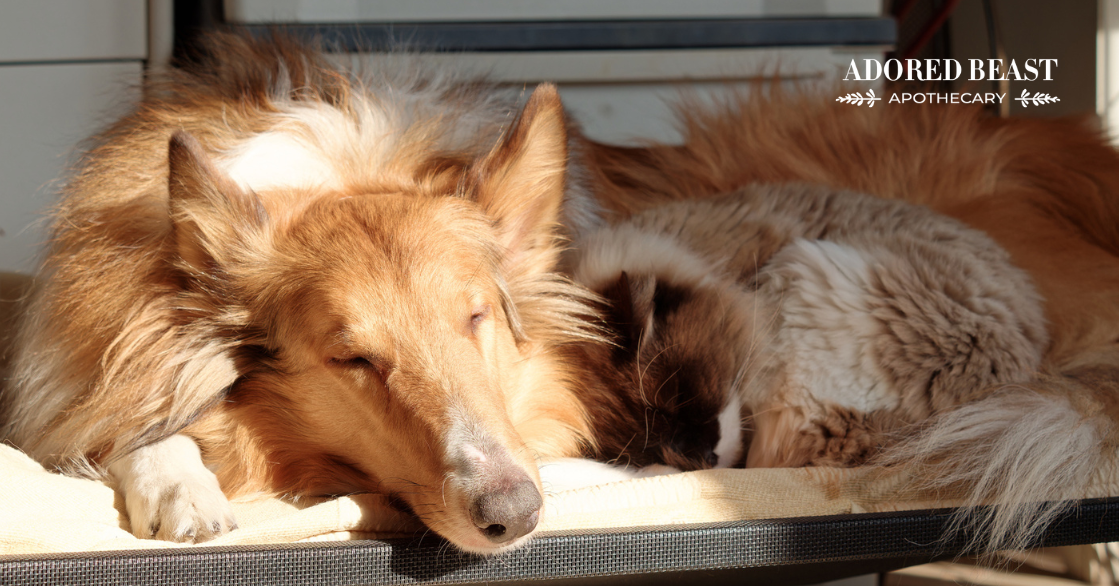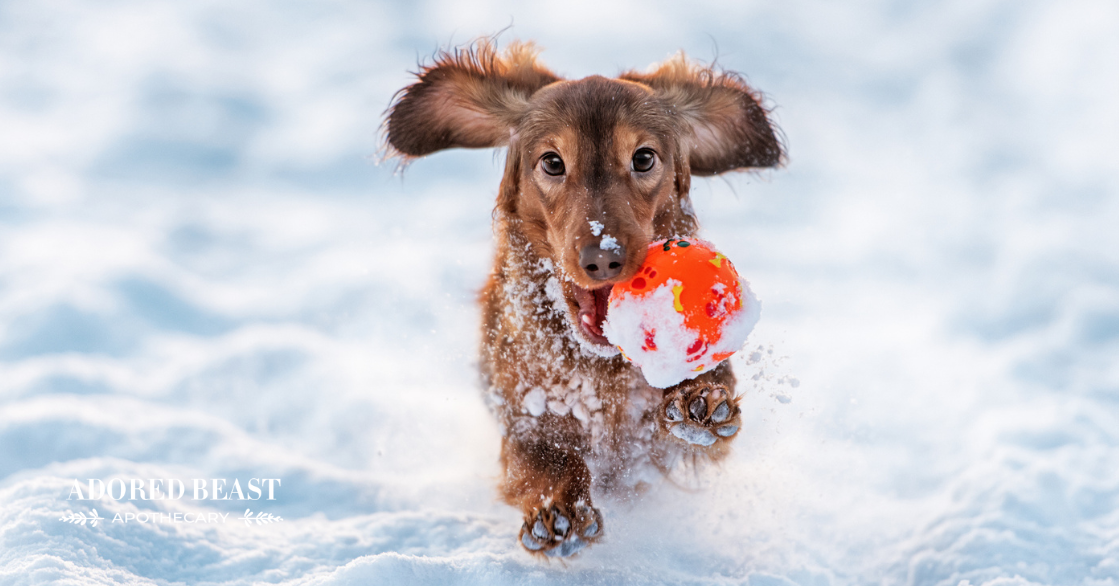What pet doesn’t love a nice, cozy bed?! For some dogs, the “bed” may be a typical dog bed, a pile of blankets on the floor, or even a child’s mattress. We’ve got all three in our house.
But no matter what they sleep on, these beds all need a good cleaning every so often.
This week, we’re talking about how often you should was dog beds (and cat beds too, of course). We’ll also give you some tips on how to do it!
So, take some time this week and give that bed a thorough cleaning!
How Often Should You Wash Dog Beds?
Be honest: when did you last wash your pet’s bed?
According to a variety of different surveys, 22% of pet parents think they only need to wash their dog’s bed once every two weeks, whereas a further 23% clean the bed once a month.
And 1 in 20 never wash them!
For the health of our animals and ourselves, experts recommend that you wash dog beds once a week.
Think about it: our dogs run around outside, walking through who knows what, then they lay on their bed. Sometimes they eat treats on the bed, or play with toys that have been outside. Sometimes they have accidents, or bring a bit of dribble in on their fur after a bathroom break…
In fact, research done by Dr. Kelly Reynolds at the University of Arizona found that dog beds are one of the top 10 dirtiest spots in the house! They’re full or dirt, germs, bacteria, and even fecal matter. Yuck!
Ok, so we’re on the same page. Dog beds need to be washed – and probably more often than we care to admit.
[RELATED] Your dog’s bed isn’t the only thing that needs washing…
How to Wash Your Pet’s Bed
Some beds are easy to wash, and others take a little more effort. Every dog bed is different, so always double check the cleaning instructions on the tag.
1. In the Washing Machine
If your dog’s or cat’s bed has a removable cover, sometimes the easiest way to wash it will be in the washing machine. Just be sure to check the tag first!
We recommend NOT using regular detergent though. So many detergents are chock-full of chemicals, and your dog spends a lot of time on their bed. Those additives – things like the dyes and fragrances – can be really irritating, especially for sensitive pets. If you use a natural detergent, that’s much better, or simply add 1/2 cup (120 ml) of white vinegar (or apple cider vinegar) to the fabric softener dispenser or to the final wash cycle. Wash on the hottest setting.
You can also do an extra rinse for pets with sensitive skin.
2. Hand Washing in the Tub
If the cover doesn’t come off, or if you don’t want to use the washing machine, wash it in the tub! Place the bed in the tub, that cover it was hot water. Switch around some white or apple cider vinegar in the water, and let it soak for 30 minutes. Drain the tub, then rinse the bed really well.
Drying the Bed
If the entire bed fits, throw it in the dryer on the medium heat setting and let it tumble until it’s completely dry. If you have wool dryer balls, use them! This will help to dry the material more quickly, keeping the fabric intact longer. You can also add a drop or two (that’s really all you need) of professional-grade essential oil to the dryer ball (ex. lavender for a high-stress week or tea tree oil for fleas and ticks).
If your pet’s bed is too large for a clothes dryer, let it dry outdoors on a warm day and benefit from the natural sanitizing properties of the sun, or hang it to dry in the house. We don’t recommend putting the bed covers in the dryer as they can shrink – and that’ll make them fit poorly on the actual bed. In this case, hang it to dry inside or outside.
Make sure you dry the bed completely to prevent mold and bacteria from growing.
In Between Washes
If you can’t wash dog beds (or cat beds) once a week, or you just want to refresh the bed in between washings, you can keep it cleaner, longer, in a variety of ways:
- Vacuum it regularly to keep dander and dust to a minimum.
- Wipe down the fabric on your dog bed with a mixture of one tablespoon of water and a cup of white vinegar each week.
- Put your dog’s bed in direct sunlight once a week to kill bacteria and remove odours.
- Sprinkle baking soda over the dog bed when it begins to stink, let it sit for 10 minutes or so, then vacuum it up.
- Place a sheet over your dog’s bed that you can easily wash in between washes.
- Wash your dog’s paws when they come in from outside to remove dirt and germs.
- For dogs who have any type of urinary incontinence, you can take the inner portion of a bed and put it in a trash bag (make sure it’s unscented), then put the cover back on. That way you can protect the inner bed from damage and just remove the top cover to wash regularly.
Your pet’s bed should be their safe space, their comfort zone. And to be safe, it needs to be clean. It does’t take much to wash dog beds, and it’s important for everyone’s health and wellbeing. This week, when you wash your own bedding, give that pet bed a little TLC. Your animal will thank you for it.












